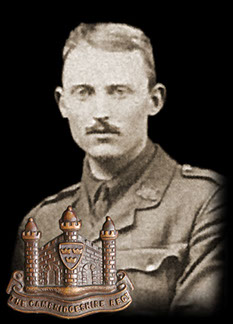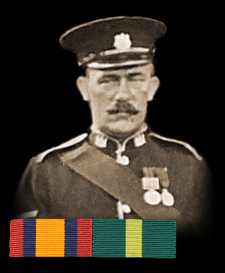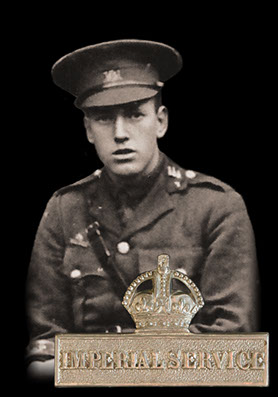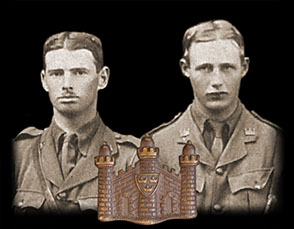
Who Were
The Cambs
The Cambs
at War
1/1st Btn 1914-1919
1914 - 1/1st Overview
1915 - 1/1st Overview
1915 - St Eloi
1915 - Fosse Wood
1916 - 1/1st Overview
1916 - The Schwaben
1916 - St Pierre Divion
1917 - 1/1st Overview
1917 - St Julien
Insignia, Medals & Books
Remembering The Cambs
Biographies
About Us &
This Site
St Eloi 14th - 15th March 1915
As any competent infantryman will tell you the best way to initiate any contact with the enemy is on your own terms. An ambush, with your enemy in complete ignorance, is by far the best way to achieve this and is precisely the position the men of the Cambridgeshire Regiment found themselves in on the afternoon of Sunday 14th March 1915. The only problem was that they were not initiating the ambush; they were the target of it, and on the Western Front an ambush meant only one thing - tunnelled mines. The Cambridgeshires were in Voormezeele in support, with various officers and sergeants taking turns in the front line at St Eloi with the Royal Irish Regiment. One of those groups was a Machine Gun team under Lieut. Jack Ollard, their objective was to gain invaluable first-hand experience of conditions in the front line positions with a unit who had already spent time in the line. Ollard had been in the line for two days and was just preparing to leave.
The attack, initiated by the explosion of a huge underground mine took place in the late afternoon. Captain Clayton, who was heading towards St Eloi at that exact moment, recorded the following account in the Regimental history:
At 5.30 p.m., whilst I was gazing towards the Mound, I suddenly saw the trench there lifted into the air; sandbags and debris seemed to rain around, and a moment later there came the dull ‘boom’ of the explosion. At the same instant the whole of the German line opened fire; away by the Mound I saw the enemy advancing. We immediately opened fire on our front. I remember firing my revolver at two men; whether I hit them I know not; in fact I have no clear recollection of what did happen for several minutes. I remember Jenkins telling me to make my way to the right to watch if the enemy had worked round, and stopping on the way to tell a red-haired private to follow me. As I shouted to him a burst of machine-gun bullets sprayed his head into a pulp from his jaw upwards, and his brains splashed all over me and two other men…
As Clayton states, the Germans followed up the mine, advancing over no man’s land toward the British lines. It was chaotic, with the Germans attacking in huge numbers and reportedly gaining the first line trench and British casualties mounting. Command and control was extremely difficult with responsibility devolving down to those manning the trenches. The Cambridgeshires, among the experienced soldiers, suddenly found themselves in a full scale battle, on virtually their first visit to the front line – it was a baptism of fire in every sense.
The battle raged into the night, with a number of machine gun duels taking place, but eventually the German advance was checked and the Cambridgeshires had played their part. Once the men were out of the line a flurry of excited and revealing letters were sent home to family and friends.
Lieut. Ollard, with his machine gun, went “up” last Friday, and with his team did great things. They were busy when Lieut. Butlin and Sergt. Chapman popped into the same trench. On Sunday afternoon they were talking and smoking, when the trench in front was blown up, and shells began to pour into the trenches on their left. The Major in charge shouted “man the trenches” and each one sprang to his rifle, and Sergt. Bowyer to the machine gun. Sergt. Bowyer did great execution with the machine gun. He stripped his tunic off, turned up his sleeves, and, cool as the proverbial cucumber, “slipped into it.”
Pte H.E. Hovey writing to a family friend wrote:
We were just going to brew some tea when a terrific bombardment started and we got a message down to say that the Prussian Guards had blown up a mound and taken some of the trenches. In fact, had broken completely through and were coming along in the thousands… the order was given to fix bayonets and charge down the road to a reserve trench… we charged up the fields at the side of the road. Men were falling all around… the attack lasted all night and I got to our headquarters about 8 o’clock the next morning.
And another Pte writing home said:
I just grabbed my rifle and shoved about 100 rounds in my pocket and off we went… well, I’m afraid it is impossible for me to describe the rest of the night. Shells were bursting all over the show, bullets whizzing by in thousands. The chap next to me was hit in the arm by a bit of shrapnel, and several of my chums were wounded. I consider myself to be extremely lucky have got through at all. All that night the battle went on, and we lost a village and three lines of trenches. They were all retaken the same night though…
Numerous later reports and accounts of the action were also written by those involved:
When the Germans attacked the senior officer was killed leaving Captain Clayton and a young subaltern, recently out from Sandhurst, in charge. The Germans captured trenches to one flank of them, and worked round to the rear. Captain Clayton and the men with him, however, held on from 6pm to 2am on Monday morning, when a counter-attack drove the enemy back to their former position. At the time he did not know whether the trenches to his rear and flank had been captured or not. He was relieved on Monday and returned to his Regiment absolutely done.
-----
Another incident in the battle of local interest was the prominent part taken by the gun section of Lieut. J.W. A. Ollard, and which added to the laurels of the day by its action… the Maxim under his charge rendered most valuable service. They were in the trench just behind the firing line and when the regulars retired, the local territorials had their turn. One report states the Germans advanced to within thirty yards of the trench before the firing commenced and the enemy were mown down, thus breaking the attack. It was stated also that this was the only gun at that part, so that considerable responsibility was taken by the section. Lieut Ollard was thus in the trenches for about 3.5 days, and, in the absence of supplies it must have been a trying time.
Because of the darkness and the limited means of communication it was difficult to ascertain who the missing, wounded and killed were. The line, despite some lost positions, was secure and reinforcements were in place. Captain Clayton describes the loss:
When darkness arrived the position was that our trench was intact, though seven out of the thirty men had been killed. Away on our left by the Mound was a serious state of affairs; we had lost six trenches and the village of St. Eloi. Ollard and Sergt. Bowyer with their machine guns in trench S 9, had materially helped to stop the enemy advance, and had taken on and knocked out an enemy machine-gun.
Sources differ as to the exact extent of the casualties that night. Lieutenant J.D. Smalley was killed, reportedly in the area of the initial explosion whilst bringing up ammunition and his Sergeant, W. French was taken prisoner. Captain O.N. Tebbutt and three other ranks were killed during the subsequent fighting on the 15th. They were Privates T. Andrews, J.W. Edis and M. Flack and all have no known grave. About another nine men are thought to have been wounded in the action.
Despite these losses the Cambridgeshires had performed well in this unexpected situation. After all, they had only been in the line to gain general experience, but had in fact got the best experience they possibly could, and had come through it with relatively few losses. Several had had very close escapes with the initial explosion but the men had learnt a lot. On Monday afternoon a counter-attack was launched which recovered the ground lost the previous day and the Cambridgeshires were able to return to the Regiment in Voormezelle.
On 3rd April the Times published a short article praising Colonel Copeman and his Battalion for their fine work at St Eloi:
The Cambridgeshires at St. Eloi: Brigadier-General’s Tribute
The 1st Battalion of the Cambridgeshire Regiment was warmly congratulated by Brigadier-General Longley on Sunday last for the part it took in the Battle of St. Eloi. He stated that the way that they advanced under very heavy shell and rifle fire towards St. Eloi was splendid and that they were of the greatest assistance in holding the village when the German attack was at its worst. He added that Colonel Copeman ought to be proud to command so fine a regiment of which he prophesised much would be heard in the future. He deeply deplored the losses which the regiment had suffered.
Beyond this praise, no awards were made to the men of the Cambridgeshire Regiment for their part in repelling this large scale attack which is quite surprising for men such as Clayton and Ollard, who both played quite prominent roles. This is most likely because they were not in the front line as a single unit but rotating in and out for 24 hour periods in small groups with another regiment. As such they were probably less likely to be recommended for awards for bravery because their own senior officers were not present. From their accounts of the action, however, it is assumed their own survival was reward enough.

Jack Ollard just before going overseas in 1915.

Sgt Bowyer taken at the 1914 camp.

Oswold Tebbutt, killed in action at St Eloi.

Muirhead Clayton and John Smalley.

This site went live on the 14th February 2015 to mark 100 years since the 1/1st Cambs went off to war.
WE WILL REMEMBER THEM
Email us: cambsregt@gmail.com
Copyright 2015, 2016, 2017, 2018, 2019 by Felix Jackson. The information and images on this site should not be reproduced without prior permission.